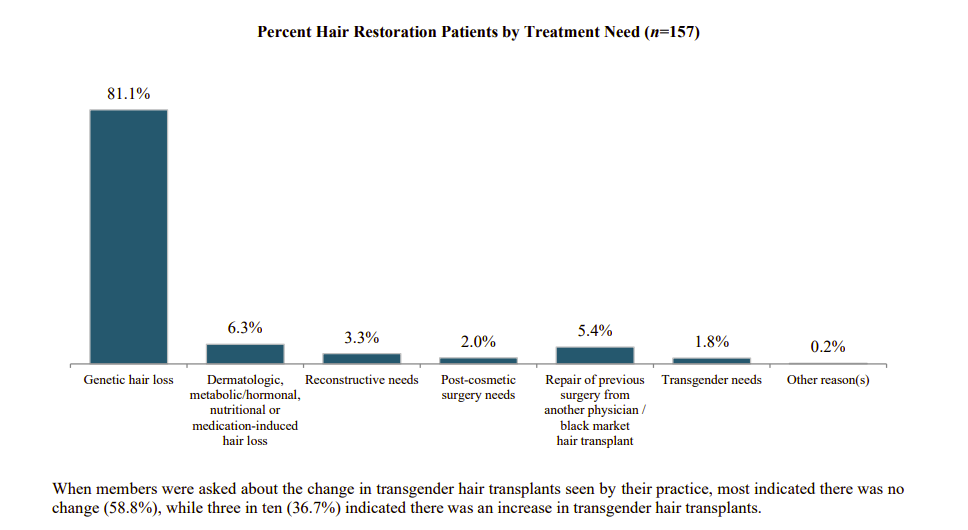
Hair restoration has become increasingly popular recently. A study with 157 participants reveals why people seek these treatments. This article explores these findings. It offers insights into the diverse needs and trends in hair restoration.
Genetic Hair Loss: The Leading Cause
The study revealed that a majority of patients (81.1%) sought treatment for genetic hair loss. This condition, often known as androgenetic alopecia, is a common form of hair loss in both men and women. It is primarily attributed to genetic factors and is characterized by a patterned thinning of hair. The high percentage of patients seeking treatment for this condition underscores the widespread impact of genetic hair loss and the growing demand for effective solutions.
Other Medical Conditions Contributing to Hair Loss
A significant portion of patients (6.3%) reported hair loss due to dermatologic issues, metabolic or hormonal imbalances, nutritional deficiencies, or medication-induced effects. These factors highlight the complex interplay between various health conditions and hair loss, emphasizing the need for a holistic approach to treatment.
Corrective Procedures for Previous Surgeries
Interestingly, 5.4% of the patients sought treatment for repairing previous hair transplant surgeries conducted by other physicians or obtained through unregulated channels, often referred to as the ‘black market’. This statistic is a stark reminder of the risks associated with unregulated cosmetic procedures and the importance of seeking treatment from reputable and experienced professionals.

Report-2022-ISHRS-Practice-Census_04-19-22
Reconstructive and Post-Cosmetic Surgery Needs
Reconstructive needs accounted for 3.3% of the patient’s reasons, while post-cosmetic surgery needs were cited by 2.0% of the patients. These figures indicate a smaller, yet significant, group of individuals who require hair restoration as part of broader reconstructive or cosmetic procedures, often to address scarring or other surgical side effects.
The Rise in Transgender Hair Transplants
The study also touched upon the specific needs of the transgender community. While most practices (58.8%) reported no change in the number of transgender hair transplants, a notable 36.7% observed an increase. This trend reflects the growing awareness and acceptance of transgender individuals seeking hair restoration as part of their transition journey.

Conclusion
The research offers insights into hair restoration motivations. It reveals that genetic hair loss is the primary reason. Additionally, it covers the unique needs of the transgender community. This study shows the diversity in hair restoration. Furthermore, it emphasizes personalized treatments. Continued research is essential in this evolving field. As such, understanding these trends is key. Both practitioners and patients benefit from this knowledge. It aids in making informed treatment choices.

